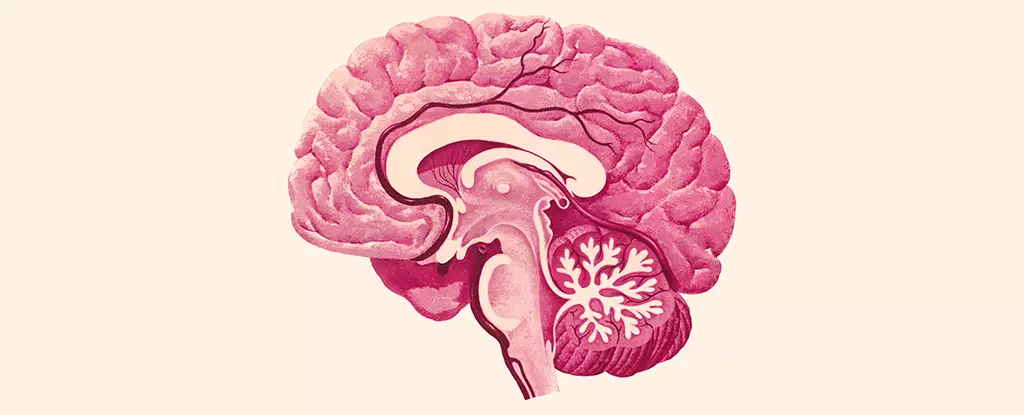Herpes Simplex Virus Type 1 (HSV-1) is predominantly known for causing cold sores, yet recent studies illuminate its potential impacts that extend far beyond this common ailment. The virus’s capacity to also infect and influence the central nervous system, particularly the brain, urges a deeper investigation into its ramifications. A recent collaborative study conducted by researchers from the University of Colorado and the University of Bourgogne offers significant insights into how HSV-1 spreads within the brain, identifying critical regions impacted by the virus and raising questions about its connection to devastating neurodegenerative diseases, including Alzheimer’s.
HSV-1 can infiltrate the central nervous system through two primary pathways: the trigeminal nerve, which innervates facial regions, and the olfactory nerve, related to the sense of smell. Understanding these routes is essential in mapping out the progression of infection within the neural landscape. However, the intricate mechanisms that facilitate the spread of the virus once it gains entry into the brain remain shrouded in mystery. Neurologist Christy Niemeyer emphasizes the importance of identifying how HSV-1 accesses the brain and which specific areas are susceptible to infection. This knowledge serves as a cornerstone for further research aimed at unraveling the mechanisms of several neurodegenerative conditions, thereby providing a potential therapeutic direction.
The study’s findings are particularly noteworthy, as they highlight that HSV-1 predominantly affects several critical brain structures, including the brain stem and the hypothalamus. The brain stem is integral for basic life functions such as heart and respiratory control, while the hypothalamus regulates various physiological processes, including sleep patterns, mood swings, appetite, and hormonal balance. Such widespread involvement poses questions regarding the functional impairments that HSV-1 can induce even in the absence of acute viral encephalitis—a severe condition characterized by intense brain inflammation.
Interestingly, the research also indicated that certain key regions of the brain, notably the hippocampus and cortex—both crucial for memory, cognition, and spatial navigation—remained untouched by HSV-1 antigens. This unexpected finding opens the door to speculation about the varying susceptibility of distinct brain regions and challenges the assumption that HSV-1 uniformly damages all brain tissues.
The inquiry into HSV-1 not only focused on the characteristics of viral infection but also investigated the central nervous system’s immune response. Microglia, the resident immune cells in the brain, exhibited sustained activation in response to HSV-1. Even after viral clearance, these cells demonstrated prolonged inflammation, hinting at persistent damage that could lead to chronic conditions. Chronic inflammation is a recognized risk factor for various neurological disorders, and the long-term activation of microglia may explain why some individuals experience symptomatic manifestations despite not developing full-blown encephalitis.
Moreover, chronic inflammation is particularly concerning within the context of neurodegenerative diseases. Niemeyer’s insights reveal that ongoing inflammation could potentially contribute to the pathogenesis of Alzheimer’s disease by disrupting normal neurobiological processes and promoting neurodegeneration in vulnerable brain regions.
The interplay between HSV-1 infections and Alzheimer’s disease is a burgeoning area of research, with symptomatic relationships warranting detailed exploration. Recent literature suggests that the neuroinflammatory responses associated with HSV-1 may play a role in facilitating or exacerbating Alzheimer’s pathology. As research continues to find parallels between the neural regions affected by both conditions, the connection grows more tangible. The findings suggest that the combination of persistent viral presence and microglial activation could be key factors in understanding the multifaceted onset of Alzheimer’s.
As scientists continue to dissect the complexities of HSV-1 in relation to brain health, this study serves as a pivotal step toward comprehending the virus’s potential to instigate neurodegenerative diseases. Unlocking these connections may pave the way for novel preventative and therapeutic strategies, mitigating the impacts of HSV-1 on the central nervous system and perhaps altering the trajectory of diseases like Alzheimer’s. Future research is essential to establish clear causative links and mechanisms, reinforcing the critical importance of understanding the implications of seemingly innocuous viruses on the brain’s integrity.



Leave a Reply